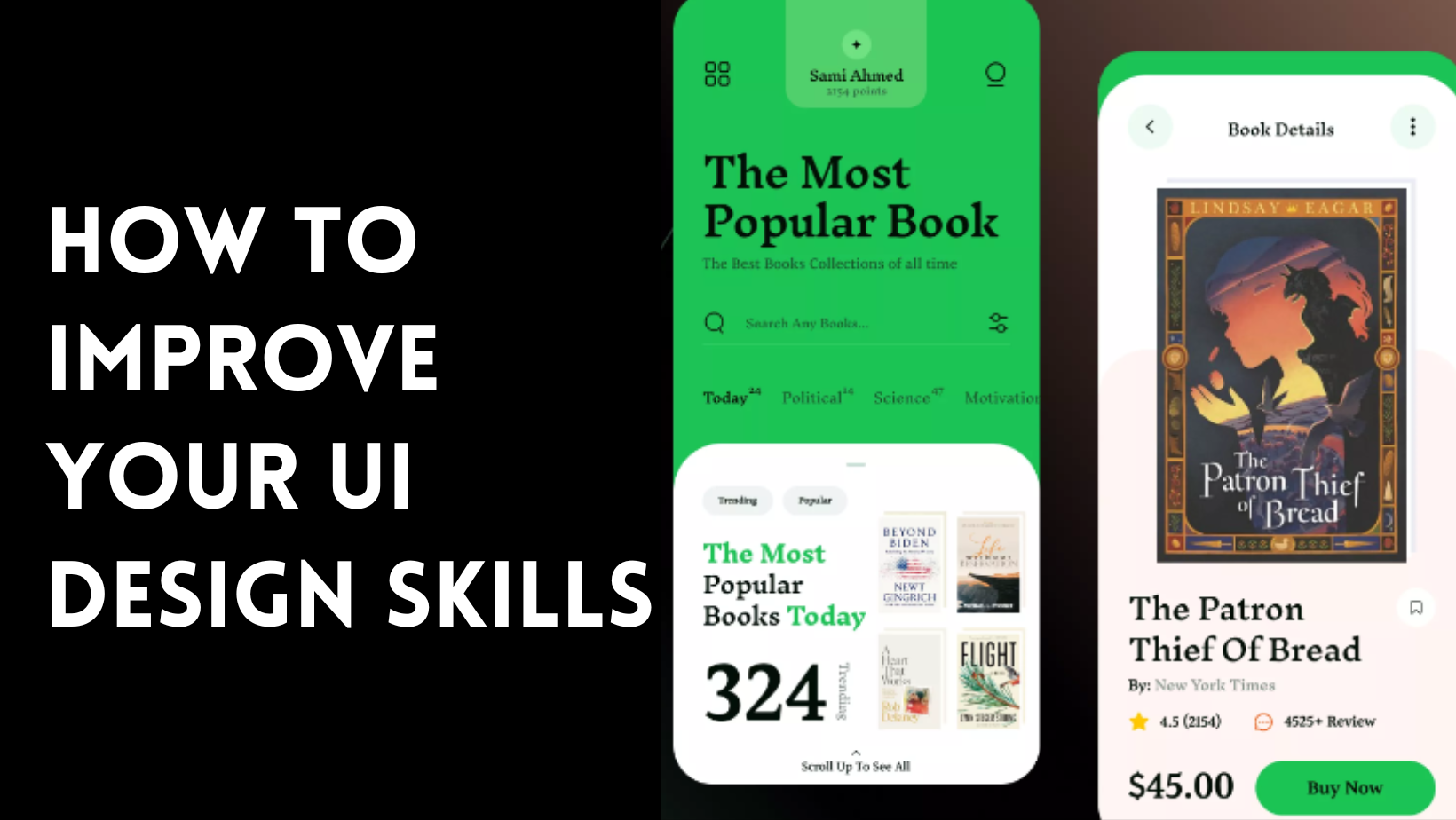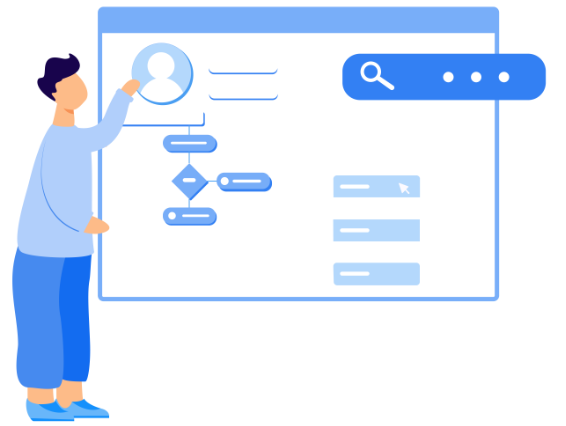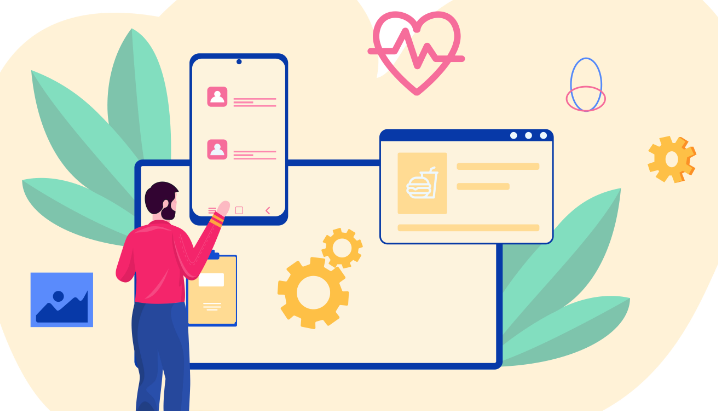10 Quick Tips to Improve Your UI Design Skills
 Mansurul Haque
Mansurul Haque
In today's world, companies are looking for expert and skilled UI designers who can deliver exceptional user experiences and set themselves apart from the competition.
So, improving your UI design skills will be a game-changer in your career and helps you achieve the success you deserve.
As a UI designer, it's crucial to constantly learn, grow, and explore new techniques to stand out in the competitive landscape.
In this blog, we're thrilled to share some important tips to help you improve your UI design skills.
So, let’s get started!
1. Do user research
User experience is the most important part of UI design. Your design should be user-friendly. You need to know about user psychology. You’ve to care about their needs and wants. You should dig out the information about the users.
User research is very important to making designs accessible, applicable, comfortable, and enjoyable to use. It helps you to create the best product for users. It’ll give you the data to create your strategy and make design decisions.
So, research the users who will use the interfaces you design. Take time to understand their needs, goals, and pain points, and design with those in mind. Solve the problems that users face. Design something that makes people happy and makes their lives easier.
2. Master the fundamentals
It is very important to have a good knowledge of fundamentals before starting any work. If you can master the fundamentals, you can design anything.
Shape:
Shapes are a basic element in UI design. Shapes can be soft, curved, round, angled, or sharp, and all of these express different moods and emotions. When the shape is designed and used correctly, it can successfully create an outstanding and effective design. So, you should have good knowledge about shapes.
Color:
Color is the most important and inspirational visual experience for users. Color can change actions and cause reactions. Every color creates different feelings and emotions. Color helps users to have better memories. So as a designer, you have to understand color psychology.
Typography:
Texts are the major sources of information and typography helps design to convey information to people. Typography holds the users’ attention and builds recognition. It works as an identification for the viewers. So, you should choose fonts that are simple, clear, and professional.
Like these, you should have basic knowledge about other design elements such as hierarchy, grids, layout, alignment, white space, consistency, icons, etc.
Design tools:
Design tools give designers what they need to design more easily and effectively. These tools will help you work faster and more efficiently.
As an example, Figma is a great tool for mastering the basics by working on different features. You can use many features for completely free. It has some collaboration features. You can work on the same design with others at the same time. It is browser-based so no matter what computer you have.
You can also use other famous design tools such as Sketch and Adobe XD.
3. Bookmark design resource sites
Using design resources we can easily convert ourselves from a beginner to a master. Visiting design resource sites and practicing the designs will make you an expert day by day.
Let’s check out some design resources sites:
Uihut
It has 22,000+ design resources including UI Kit, illustration, mobile UI, web UI, icons, 3d graphics, etc. These can save you tons of hours and boost your workflow. You can use the UI elements simply by copying and pasting them on your Figma file. Uihut also offers Figma Plugin which enables you to get all the design elements in your artboard without leaving Figma.
Land Book
It’s a collection of the best websites to find inspiration and motivation. This is very helpful for copying designs for practice and getting more ideas.
Mobbin.design:
It’s a set of examples where you can look at different types of apps and learn from commonly used design features, styles, and patterns. Here you can find many screenshots. It is a good resource site for practice in detail.
Growth.design:
It’s a collection of examples and case studies of real digital products. This resource site explains design decisions in detail. It’s really helpful for designers to learn how other successful apps became successful.
Dribbble
Dribbble is a platform where you can find a vast library of UI inspirations. It is an online community of designers from all over the world.
Product hunt:
It’s an extensive collection of the best new products. Here you can find a huge list of companies and see different ways of working.
Figma community:
You can find UI kits, editable UI inspirations, pre-made templates, plugins, etc. from the Figma community. This will save you a huge time and make your design process easier.
4. Develop a strong visual eye for UI design
Visit websites and mobile apps more and more. Look at every part of the design. Pay attention to the details and try to find out the unique parts of the designs that make the website or app special.
Seek out world-famous professionals’ designs that have completely different styles which make their designs creative. Focus on shapes, alignment, color palette, spacing between elements, light, contrast, typography, images, icons, and illustrations.
You need to know about minimal design and you should maintain simplicity in design. You’ve to ensure consistency and familiarity across the product. Exploring details in website and app designs will bring you a lot of inspiration for your design.
Wherever you go in this world, there is design. As a UI designer, everything should be observed from your design perspective.
5. Find your mentor
A Mentor is a great resource for advice, ideas, thoughts, and insights. Mentor push you to go farther and helps you become a better leader yourself. He will let you know in advance about the problems that he has faced and also suggest ways to solve them.
A design mentor will give you a clear idea about design tools and design techniques. He will give advice on defining your goals and guiding you to work towards the goals in possible steps by assigning you tasks.
He can guide you with his experience and offer you a new perspective. You might face challenges in your learning journey and he can give possible solutions on how to fix the challenges. He will give you feedback on your work and help you improve your skills.
6. Get connected
Join some design communities and participate in discussions. It will give you access to a huge network of people and opportunities to connect with them.
It will help you to represent your views and gives you a chance to ask your questions. Also, it will help you to understand an important topic or concept deeply which will stay for a long time in your brain.
Involving and participating in continuous research activities you will learn what problems they’re trying to solve, and what solutions make the most sense. You will be able to understand information more accurately and quickly.
Not everyone thinks the same, so you will get a lot of different insights, ideas, and perspectives from there. It’s very helpful for decision-making and planning.
Face-to-face networking is very useful for learning but you can also join online communities where you can find UI professionals.
7. Get experience
Work experience gives you the chance to apply your skills. It helps you start developing a professional network. It also helps you understand design more. This will give you an idea of what skills you need to improve to succeed in the workplace.
You can do freelance work on Upwork, Behance, Dribbble, Fiverr, LinkedIn, Freelancer, PeoplePerHour, Guru, SimplyHired, etc.
Getting experience can help to prepare you for a fulfilling career in the design world.
8. Learn from feedback
Feedback is a process where you reflect on your past performance and take steps to improve future performance. So, the main purpose of feedback about design is to know where you need improvement and how growth can be achieved in your career.
Feedback is very important for success. It gives you motivation and makes you confident.
Give importance to both good and bad feedback on your design. Take good feedback as inspiration and bad feedback as your turning point. Bad feedback tells us what we should do better and need to work on. Feedback will definitely help you improve faster.
9. Stay Up-To-Date
In today's competitive world, staying up to date is crucial. The design world is ever-changing, with new trends emerging every year.
There will always be new design tools to learn and concepts to master. You need to keep an eye on new things and try new trends to improve your UI design skills.
Read design blogs. Subscribe to the best blog websites and make a habit of reading them regularly. Also, subscribe to the best UI/UX design YouTube channels. These will inform you about the latest trends.
By staying up-to-date, you can learn about these new trends and apply them to your work. It will ensure that your designs remain fresh and relevant.
10. Practice, Practice, and Practice
Whenever you see a design, try to design it exactly like this. Get into a habit of designing something every single day. Create small goals, such as how many designs you will complete in 7 days. After 7 days, see what you learned new. And after 1 month see how your skills have improved even more.
Practice what you learn every day. Try to be a little better every day than the day before. Practice will take your skills to the next level. The more you practice, the more you find problems. But remember, there is nothing that can’t be overcome. So, the more problems you solve, the more confident you will be.
Final Words
We hope that you found these 10 quick tips helpful and inspiring to improve your UI design skills.
By implementing these tips, you can take your UI design to the next level.
So, keep continue learning and explore new design techniques.
Best wishes!
More blogs on UI/UX design:
The Difference between UI and UX Design
10 Most Important Tips For Mobile App Design
15 Do’s & Don'ts Of Web Design
Top 15 Free Icon Resources For Your UI Design Project
7 Reasons Why Illustrations Are a Must-Have in UI Design
10 Reasons Why Minimalism is Important in UI/UX Design
What is Design Thinking? A Game-Changing Way to Solve Problems
Subscribe to my newsletter
Read articles from Mansurul Haque directly inside your inbox. Subscribe to the newsletter, and don't miss out.
Written by

Mansurul Haque
Mansurul Haque
Founder & CEO at UIHUT




